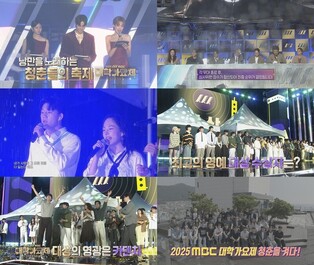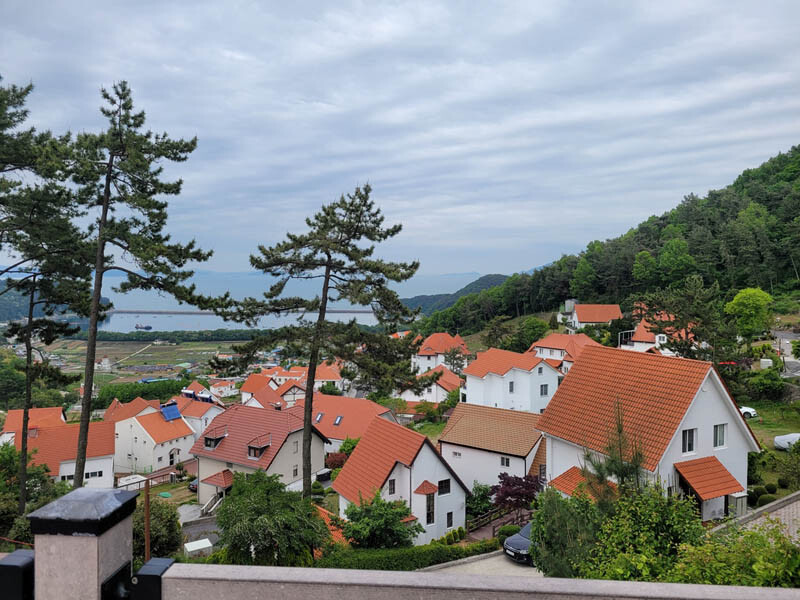 |
| ▲ This photo shows the scenery of the Namhae German Village viewed from the observation spot. |
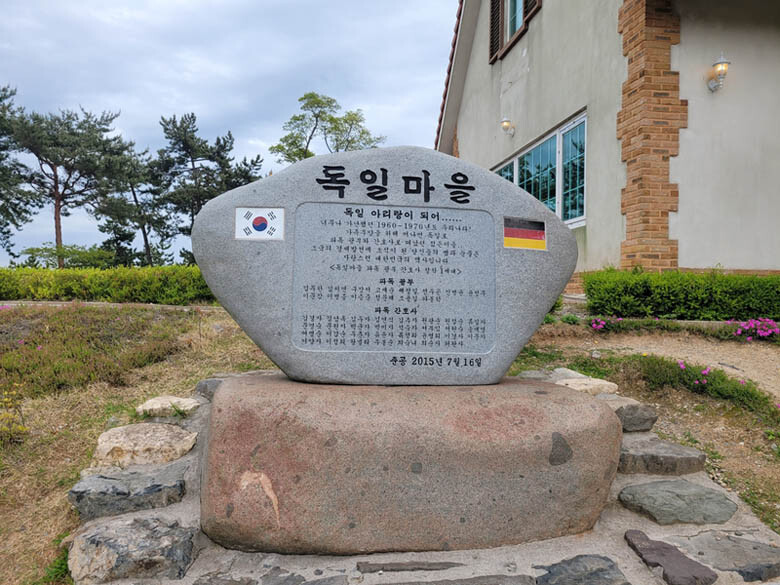 |
| ▲ The names of the Korean-German residents who moved in during the initial construction of the village are engraved on memorial stone. |
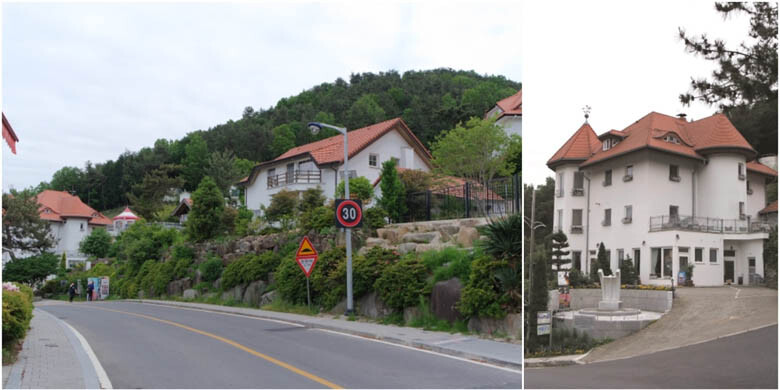 |
| ▲ The houses that are built in rows within the Namhae German Village reflect the traditional German housing styles. |
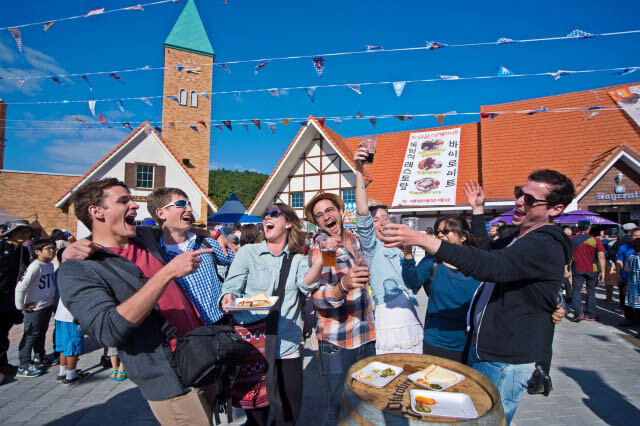 |
| ▲ This photo provided by the Namhae County shows people enjoying the annual beer festival "Oktoberfest" at the Namhae German Village. (PHOTO NOT FOR SALE) |
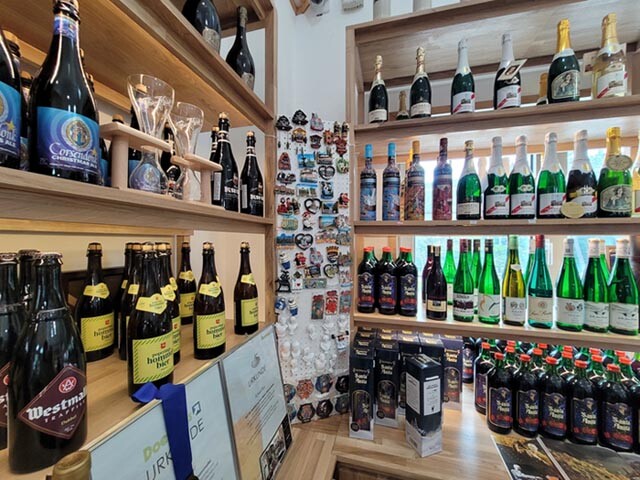 |
| ▲ This photo shows a souvenir shop that sells beer, snacks, and other souvenirs from Germany that are hard to find in Korea. |
NAMHAE, May 21 (Yonhap) -- On the southeast coast of Namhae County, Gyeongsangnam-do, an exotic landscape that is quite different from any fishing village can be found. The Namhae German Village is the perfect fusion of traditional German houses and the natural environment of Namhae.
Seo Won-sook (69) remembers leaving S.Korea at a young age to work as a nurse in Germany. She met her husband, who was working in the same place as a miner, and had two children.
The couple worked hard and was able to earn enough money to buy a house and settle down, but no matter how hard they tried, the label of 'foreigner' always seemed to follow them around, making them feel homesick more than ever.
"When my kids went to school, they were bullied for being Asian," Seo said. "It was the main reason we decided to move back to Korea."
However, opposite to Seo's expectations, her home country wasn't too different from Germany.
"There were a lot of people who tried to take advantage of us because we didn't know much about Korea. We realized we've become strangers who couldn't fit in Korea nor Germany," Seo explained calmly.
Then appeared Namhae German Village; a place Seo's family finally felt like they belonged and
could start a new dream. Now, it has been 14 years since Seo and her family have started living in the village.
The German Village was created in 2001 with the goal of providing a place for Korean-German residents, who were dispatched to Germany as industrial workers in the 1960s, to settle in Korea.
Initially, a total of 45 people including 40 first-generation Korean-German families lived here and 20 years later, 24 people from 18 households currently surround the village.
◇ How the search for "perfect grass" led to the establishment of the Namhae German Village
Kim Doo-kwan, a former civil servant, a prefect of Namhae County in 1995, and currently a South Korean Democratic United party politician, was deeply concerned about ways to revitalize the tourism industry to enrich local livelihoods.
Unlike neighboring areas such as Gwangyang and Yeosu city, where industrial complexes are easily located, Namhae County had to rely solely on its natural environment.
One of the measures promoted at the time was using the warm weather to create a winter sports training center called "Namhae Sports Park."
Namhae County turned to Germany for the first time in order to look for grass to implant within the sports park. The county figured the grass in Korea wasn't the ideal choice since they turn yellow during the winter, therefore decided to import German grass, which typically stayed green all year round.
From 1997 to this day, Namhae County remains as a sister city with the northernmost district of Germany, Nordfriesland, and the Korean-Germans serve as a bridge between the two places.
In the 1960s when Korean natives, who worked as nurses and miners in Germany. expressed their desire to return to their homeland after retirement and set up a village to the Namhae County . This appeal moved former Namhae County governor Kim Doo-kwan's heart as he too, had a brother who was sent abroad to work as a miner.
Kim also judged that the requested desire could help increase the residents' income by creating unique tourist attractions containing European culture in Namhae County.
Namhae County was in charge of preparing the site, installing infrastructure such as roads, water and sewage treatment plants, and electricity facilities while the residents designed the buildings to better suit their needs.
The Korean-Germans set the village concept as a traditional German style and airlifted resources and materials directly from Germany. This background story ultimately led to the current exotic landscape of the Namhae German Village.
◇ A taste of Germany in the heart of Namhae County
Most of homes within the German village are three-story houses, where the owner's family lives on the first floor and the other floors operate as guest houses.
Although some of the buildings left by the first-generation Korean-Germans are commercially operated by Korean residents, many are still run by other Korean-Germans.
Many of the residents seemed to take pride of the fact that everything in the village is authentic, unlike other accommodations that only appear to be decorated like Europe.
According to Seo, "Germans value frugality and organization and as people who have learned these values, we prioritize these values too."
"For example, we manage our houses and accommodations in a stable and clean manner rather than focusing on decorations," Seo added.
The accommodations in the Namhae German Village are also a popular place to experience the lifestyle practiced in Germany. In the past, students who were studying German visited the village every vacation.
Residents also own restaurants in order to spread the German food culture. Deutschee Imbiss, a German-style snack bar, is like a Korean cart bar or a street vendor where people can enjoy snacks.
Deutschee Imbiss also sells handmade beer and sausages made in the traditional German way, and offers programs such as a tour of the German handmade beer process for tourists, as well as making one's own German sausage.
Jung Moon-young, a cultural tourism commentator of the German village, said, "In Deutschee Imbiss, residents who are former nurses and miners make their own foods and serve the guests. This place serves as a piece of memory for the residents and a place of fresh experience for tourists."
Although it has now been temporarily suspended due to COVID-19, the beer festival "Oktoberfest" in German Villages is a local festival recognized by local governments.
Oktoberfest, which began in 2010, will be held at Deutscher Platz, which is the central square of the village. The festival is remarkably well hosted that Germans living in Korea visit the festival when missing their hometowns.
One one side of the square is a small souvenir shop that sells local German goods. The shop sells German beer, snacks, festival costumes, and souvenirs that are hard to find in Korea.
"I always have the mindset of 'now or never' whenever I buy souvenirs during my travels. I have the same thoughts here because I feel like I'm actually on a trip to Europe," said Kim (31), a tourist who visited the Namhae German Village.
The Namhae German Village, which was built to help Korean-Germans settle in the earlier days, has now become one of the popular tourist destination with more than 1 million people visiting annually. The village is also going viral as the place that feels "more like Germany."
Ever since the Namhae German Village was introduced through dramas and movies, German restaurants, bars and cafes run by individuals have opened one after another around the village, expanding the area of the tourist destination itself.
"Recently, as travelling overseas has become dangerous, many people visit the Namhae German Village for vicarious satisfaction," commentator Jung said. "I hope many tourists will enjoy not only exotic scenery but also the authentic German culture."
(END)
(C) Yonhap News Agency. All Rights Reserved


















![[ENG/JPN/Full] TEMPEST(템페스트) 'In The Dark(어둠 속에서)' Showcase|As I am|한빈·형섭·혁·은찬·LEW·태래](/news/data/20251027/p179578205733686_156_h.jpg)

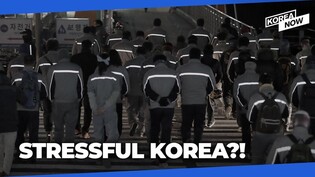

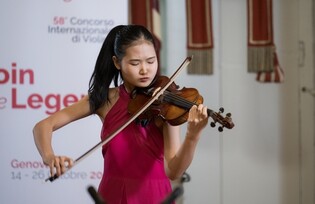

![[가요소식] 로이킴, 신곡](/news/data/20251027/yna1065624915906732_372_h2.jpg)



